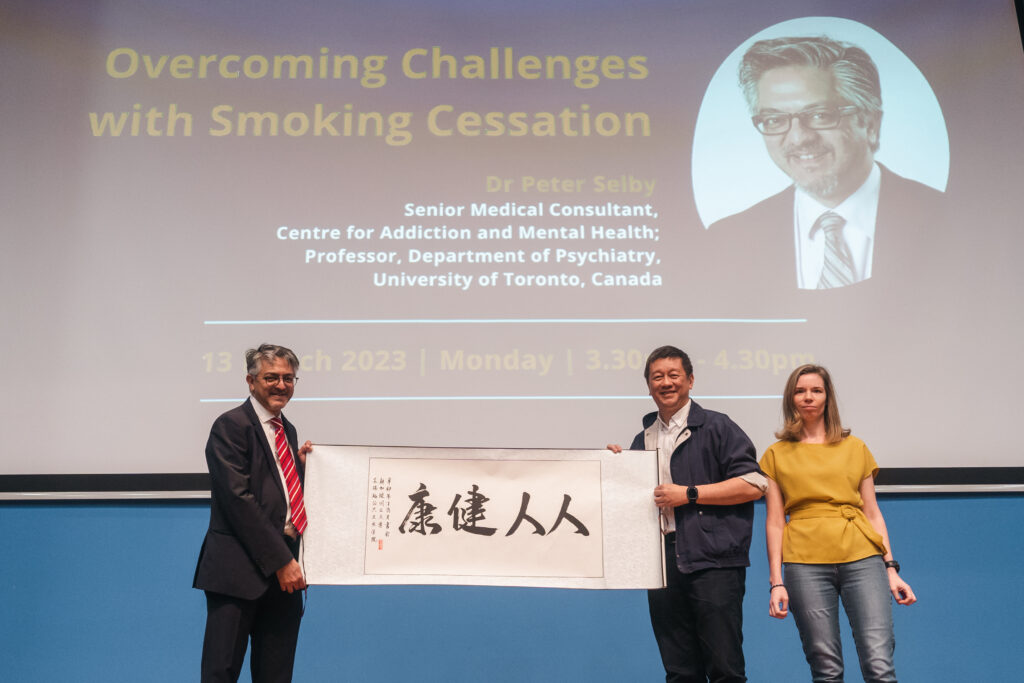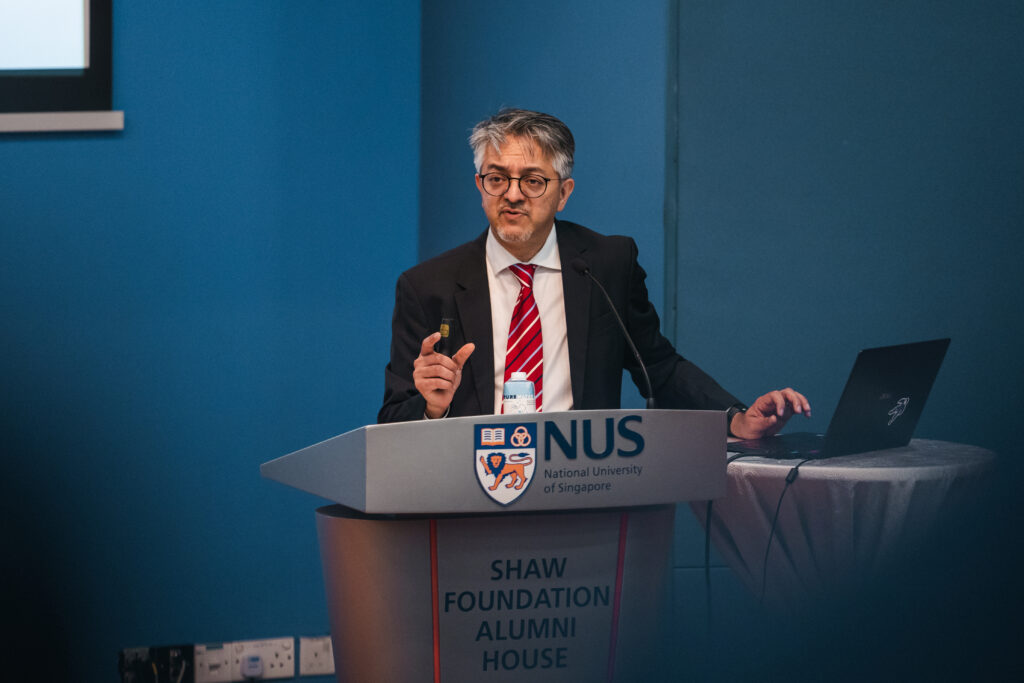Did you know that tobacco use kills 5.4 million people annually and accounts for 1 in 10 adult deaths worldwide? That is equivalent to an average of one person every six seconds. More insidiously, most of the tobacco’s damage to health does not become evident until years or even decades after the onset of use. This means that while tobacco use is rising globally, the epidemic of tobacco–related disease and death has yet to reach its peak.
In view of this, the 12th instalment of the Public Health Thought Leadership Dialogue (PHTLD) was held on 13 March 2023 with the theme of “Overcoming Challenges with Smoking Cessation”. The School is delighted to have smoking cessation expert, Dr Peter Selby, Senior Medical Consultant, Centre for Addiction and Mental Health; Professor, Department of Psychiatry, University of Toronto, Canada, as the distinguished speaker.
In his keynote presentation, Dr Selby gave an insightful take on building a pragmatic model to understand human health behaviour change, conceptualizing ways to address the challenges in smoking cessation, and an enlightening introduction to the milestones in smoking cessation. In addition, he also shed light on the challenges and lessons learnt from the current cigarette smoking situation in Canada.
The key takeaways from the session are as follows:
- Design based on models of care
- Use a chronic disease management model
- Biopsychosocial determinants of the challenges at the individual, clinic and system level
- Interventions need to be easier than smoking
As a token of appreciation, Assoc Prof Jason Yap, Vice Dean (Practice) of NUS Saw Swee Hock School of Public Health, presented Dr Selby with a calligraphy scroll replica of the memento first gifted to the late Prof Saw Swee Hock when the School was established in 2011.
The Chinese characters on the scroll translates to “health for all”, underlying the School’s commitment to turn discovery into healthier communities. The very same characters when read from your left to right means “all for health”, highlighting how good health provides a critical foundation for a strong population.








